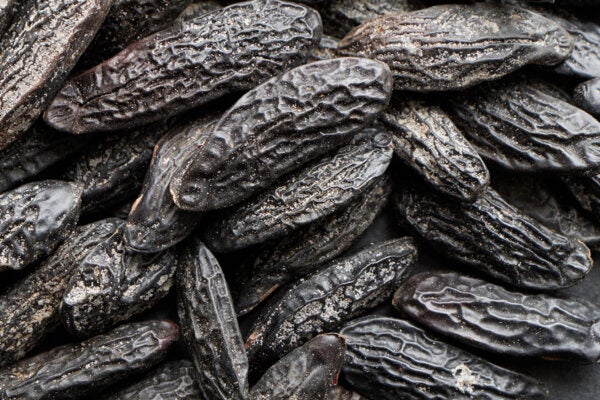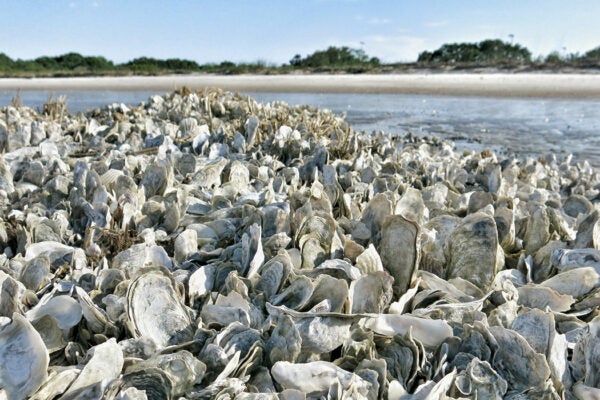Have you heard? Sitting at your desk job all day is killing you; a superbug is out to get you; and your gut, it’s a desert wasteland. You’re also neurotic, stressed, socially isolated, too sedentary, and suburbanization/urbanization is conspiring to keep you that way. Allow me to propose a simple, cost-neutral antidote: go outside for a shot of nature.
***
Imagine what alien observers might conclude about modern humans. One look at our mega cities could easily lead them to believe that we are in love with impervious surfaces, and that we will construct and flock to them madly until we have fully abandoned all other, more natural habitats. If these same aliens had access to empirical studies about human well-being, they might wonder why we are so intent on thwarting ourselves by eradicating our access to the natural world. In fact, it’s nature we love, even as we are paving over it.
Why do we love nature? E.O. Wilson helped popularize the term biophilia, meaning an affinity for nature, and at the same time posited that this fondness is innate. There is elegance to his proposal, particularly for those of us who enjoy making sense of the world through the lens of evolutionary biology. However the hereditary aspect of his assertion and the associated mechanism is somewhat controversial and largely unproven; we cannot yet say how or why a love of nature is encoded in our genes. But it would be remarkably interesting for scientists to revisit biophilia in the context of epigenetics. A transformative reshaping of the nature versus nurture debate, epigenetics has proven in other contexts that parents’ experiences affect key types of gene expression in their children. Maybe a love of nature is like this, where a parent’s positive experience of nature codifies a nature love in their children.
Regardless of whether biophilia is genetic, evidence abounds of the positive effect of a dose of nature on humans. Many studies bear this out. Urbanites with access to green space are happier and have more social cohesion, office workers who get a taste of nature are less strung out and presumably more productive, surgery patients with a nice view out the window heal faster, and kids are better at learning in daylit classrooms .
This is pleasing to me, given the decades I’ve spent self-medicating. Also pleasing to the Luddite in me is the evidence that technology surrogates for nature prove inferior. Though we can manufacture some of the benefits of nature exposure with technology (think screensavers with close-ups of flowers and robotic pets), its potency is limited, and our attention is likely better spent conserving and enjoying actual, real live nature. This is before we even start taking into account the myriad other benefits of actual nature, such as ecological services and the general life-giving nature of nature.
Some of our abandonment of the outdoors, despite its benefits, seems to be correlated to the rise in our understanding of infectious disease. Arguably, our obsession with controlling disease was not just concurrent with distancing ourselves from nature, but a more direct cause. Modern biophobia seems propelled by our war against infectious disease and the subsequent commercialization of sanitation. The transference of predatory fear from lions and tigers and bears to invisible germs seems to have done a number on our psyches, which is understandable, and perhaps has made us complicit in sequestering ourselves indoors with bottles of disinfectants and hand sanitizers. But our knowledge of the role of microbial life in both disease and health is much more robust now, and it is time to embrace the fact that we are mostly made of invisible critters working toward our mutual benefit. We can tell the difference between the microbial good guys and bad guys in a more sophisticated way now, and can have more targeted interventions against disease. It is a bit gross, but also fabulously interesting that a vast majority of the cells that comprise us are other. We are our own ecosystems, made stronger by exposure to the natural world. We seem to be slowly coming back around to idea that health is not just the absence of disease, but thriving mentally, physically, and socially.
If E.O. Wilson is right, that our love of nature is innate, what does it mean to be cloistering ourselves inside, away from it? This question seems most relevant in the context of youngsters who have no opportunity to develop a foundational relationship with the natural world, nor tap into the impressive benefits of nature exposure. Richard Louv’s Last Child in the Woods: Saving Our Children from Nature-Deficit Disorder serves as a comprehensive repository for anecdotal evidence and research findings regarding the value of nature experiences for children, including consideration of the role that technology and urbanization have played in the changing landscape of childhood. Though perhaps sometimes lacking scholarly robustness, the book works well as a primer for bringing attention to a broad audience about the potential negative implications of leashed-in childhoods.
“Nature-deficit disorder” is not a clinically recognized condition, though it has a kind of intuitive appeal, particularly in light of the evidence of the health benefits of nature exposure and the outbreak of nouveau childhood problems like obesity and attention deficit disorder. It also edges toward implicating some other questionable trends of modern life, such as helicopter fear-based parenting. The rambling adventures I remember as a free-range kid (Spiders! Woods! Barbed wire! Electric fences!) would be classified now as something closer to abuse, whereas I like to think of the defining characteristic of my upbringing as a kind of benign neglect that made me resourceful and armed me with a starter collection of worthwhile stories.
This problem of too little nature is one of many that can be (relatively easily) solved with a modicum of will. It is no trip to Mars, so to speak, in terms of technical complexity. But who of our specialist advisors is going to sell us, again and again, on engaging in the free free free activity of going outside? We are all on the hook for demanding this in our lives. It is spaces for gardening, workday breaks outside, walking trails through native vegetation, bird songs, windows that open, glimpses at the sky, plants inside and out, building materials from recognizable origins, parks and open space, light from the sun. Many of these old-timey things are gaining ground under the new-timey rubric of green building and sustainability. This gives them legs, which I am glad for, but also seems a bit silly.
Weekly Digest
Educators, employers, health care workers (including mental health care), developers, urban planners, interior designers, and municipal officials likely play the most direct role in reshaping our quotidian experience to include more doses of nature. It is promising that designers are working to codify the key aspects of biophilia in an attempt to foster their inclusion into design, that many new schools include more daylighting, and that standing desks are increasingly available for purchase. But all these solutions seem a little overwrought when you consider the ease of more direct prescription.
Go outside to nature. It’s good for you. It’s subversive. It’s normal. It’s practically a panacea.







